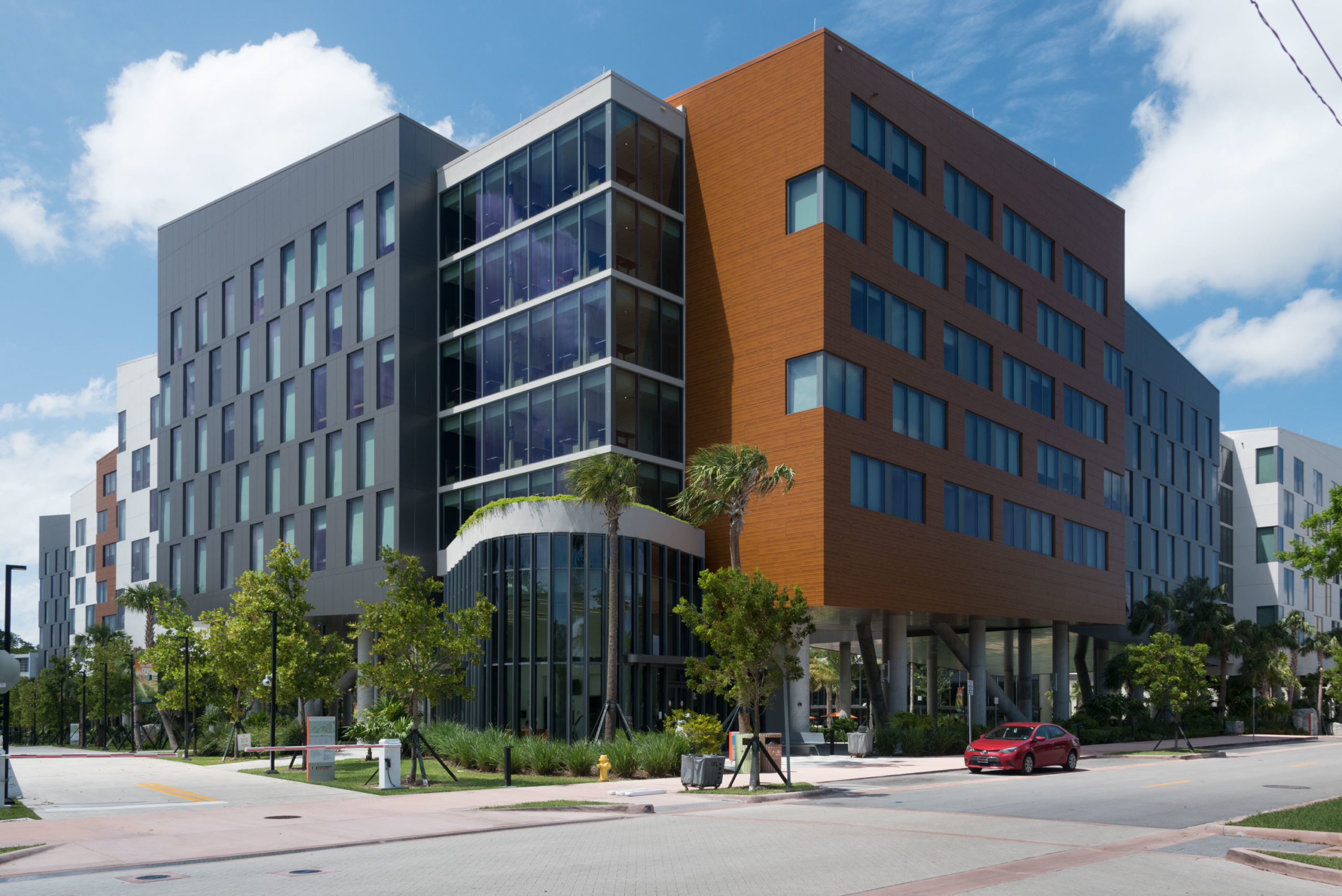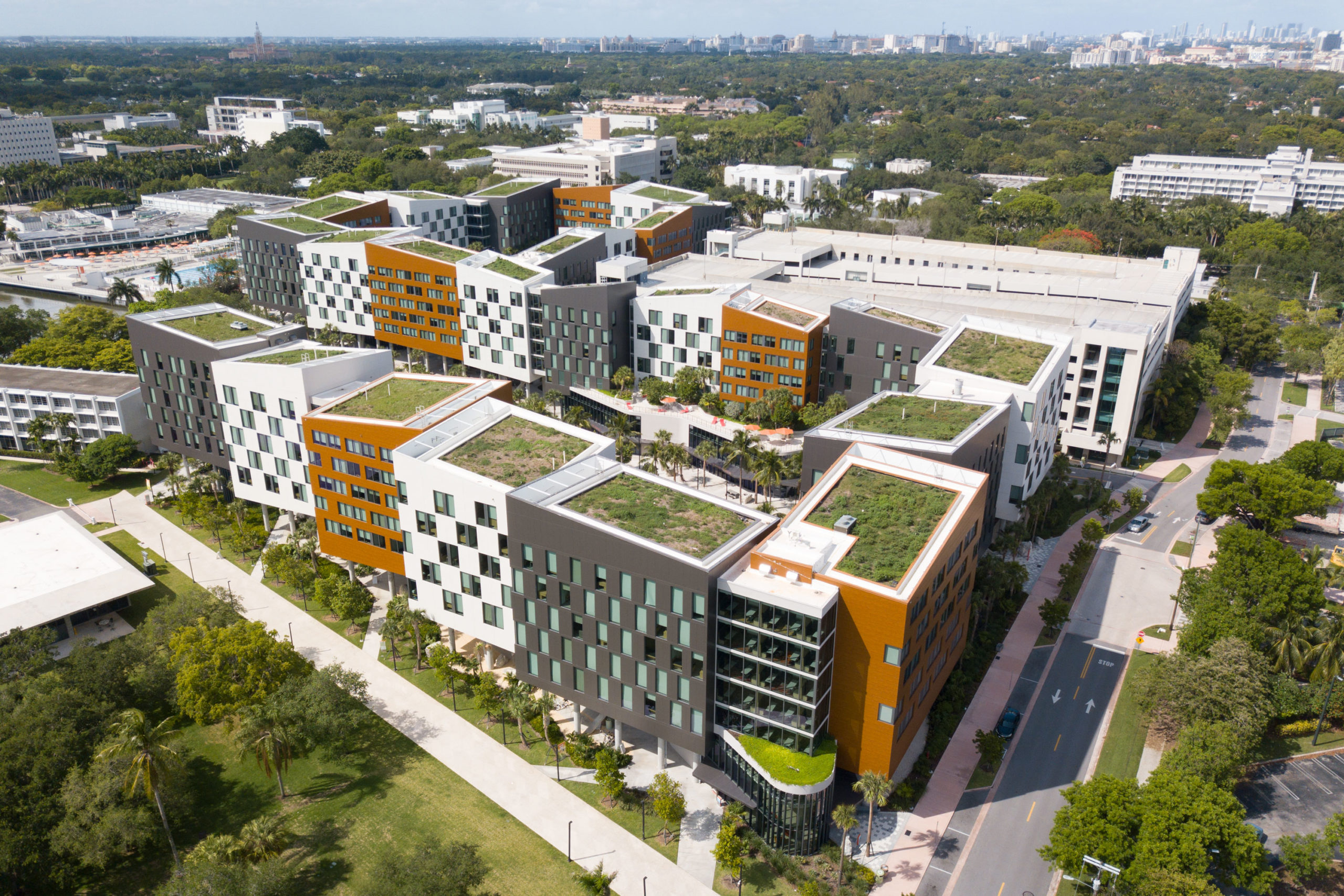Guest Author: Michael Bowie, ALPOLIC Technical Support Specialist
ALPOLIC metal composite materials (MCM) are some of the most sought-after architectural products because of their quality, versatility and the wide range of finishes. While there are options, choosing the wrong paint system can leave you with a finish that looks muted after just a few years. We often receive inquiries about the types of paint used in manufacturing our MCM, specifically what the differences are between polyester and more expensive fluoropolymer finishes. While they do look similar, at least initially, the variances are more often seen in their performance over time and are clear when reviewing the warranty limitations. Understanding the chemical component of each helps our customers make informed decisions about what is best for their specific projects.
Thermosets and Thermoplastics
Two categories of paint used to coat MCM are thermoset and thermoplastic. Thermosets, such as polyester and FEVE (LUMIFLON) paints, have clear resin bases allowing for a broad range of colors and glosses. Imagine adding red food coloring to a glass of water. The red color shows through easily, like in Kool-Aid. Thermoset paints, once cured, are not susceptible to pressure mottling (uneven or irregular gloss pattern on the painted surface of coil), typically heat or pressure related. FEVE paints ensure exceptional color accuracy and provide the widest gloss ranges in the industry.
Thermoplastics, like the fluoropolymer PVDF (Kynar) paints, are a dispersion of 70% PVDF and 30% clear resin. The dispersion results in a milky appearance that does mute colors and limits the attainable gloss rating. Imagine adding the same red food coloring to a glass of milk. You will end up with pink milk but not bright red. Additionally, thermoplastics allow for the paint to soften with exposure to heat or pressure.
An easy analogy would be to equate thermoplastic paint to an ice cube and thermoset paint to an egg. When heated the ice cube becomes water, but if chilled again will be formed back into an ice cube. This process can be repeated often. A thermoset paint, in contrast, is like an egg. When the egg is heated it becomes a fried egg. When chilled it becomes a cold fried egg. It does not return to the original form.
Test Requirements
Polyester paints, in all their configurations such as Siliconized Polyester, Super Polyester, High Performance Polyester, IJP, and Standard Polyester, have limited resistance to UV degradation. Though some perform better than others with UV exposure, no polyester paint reaches the highest finish standard of AAMA 2605. This specification requires, among other criteria, that in a 10-year South Florida exposure test, the color fastness is maintained in excess of 10 years exposure holding to a maximum variance of Delta E5. AAMA 2604 states that the finish will exceed five years exposure within Delta E5.
AAMA 2603 offers no assurance for color fade.
Most polyester paints will meet AAMA 2603, and a few, with additives, may meet AAMA 2604, but only fluoropolymers such as FEVE(LUMIFLON) and PVDF (Kynar) will meet AAMA 2605.
So, where the colors may begin as similar, polyester’s performance is greatly impacted by weathering in a relatively short period of time. It will fade, peel, chalk much sooner than FEVE and to a much greater degree.
For this reason, ALPOLIC recommends that all exterior applications should use FEVE for optimum exterior performance. Polyester paints may be used in interior applications where UV exposure is limited.

Warranty Variations
Warranty provisions are extremely important here. Some manufacturers will offer a 10-year or longer performance guarantee on a paint that cannot meet AAMA 2605. This is because the warranty is for material replacement only. And the cost of remediation is far more dependent on the labor costs than the material cost. It is estimated that the deconstruction, fabrication of new panels and installation cost is approximately 75-85% of the total remediation cost. To execute this warranty, the owner is expected to pay an additional 300% or more of material cost to cover the fabrication and installation to repair a problem with the non-performance of the paint.
The warranty should be for both material AND labor. Demand your warranty is in situ, Latin for in place. Anything less puts the onus of repair on someone other than the material supplier.
We invite you to explore the difference in warranty value with our calculator.
Application Consideration
Fluoropolymer paints are inherently resistant to post-paint applications. They do not readily accept applications such as ink printing. This is also what makes these paint systems somewhat graffiti resistant. In contrast, most polyester paints can be printed upon, including with UV ink jet.
When considering what the final application is, interior or exterior, printed or not, the paint type chosen can be an indicator of the success expected.
photography and content ©courtesy of ALPOLIC
